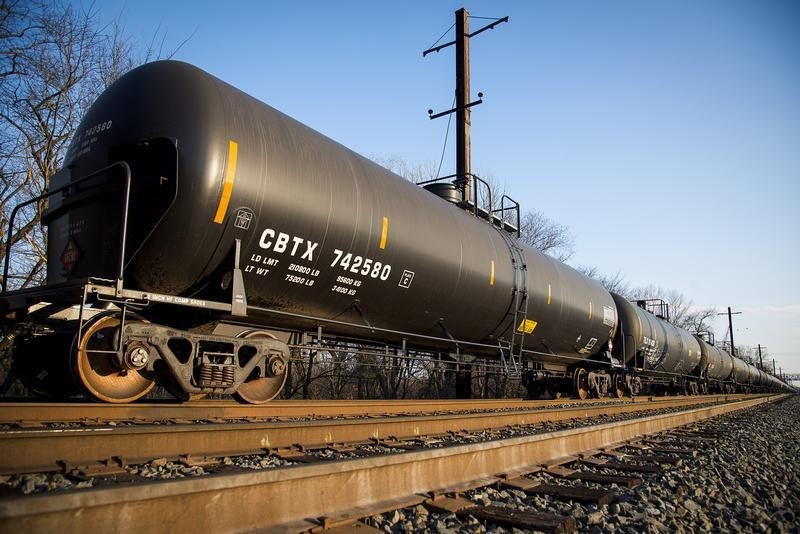Investing.com - Oil prices trimmed overnight losses in North American trade on Wednesday, rising back towards five-week highs after data showed that U.S. crude and gasoline supplies fell last week.
Crude oil for September delivery on the New York Mercantile Exchange dipped 10 cents, or 0.21%, to trade at $46.48 a barrel by 10:40AM ET (14:40GMT) after rallying to $46.73 in the prior session, the most since July 12.
Prices were at around $45.92 prior to the release of the inventory data.
The U.S. Energy Information Administration said in its weekly report that crude oil inventories fell by 2.5 million barrels in the week ended August 12. Market analysts' expected a crude-stock gain of 0.5 million barrels, while the American Petroleum Institute late Tuesday reported a supply drop of 1.0 million barrels.
Supplies at Cushing, Oklahoma, the key delivery point for Nymex crude, declined by 724,000 barrels last week, the EIA said.
Total U.S. crude oil inventories stood at 521.1 million barrels as of last week, which the EIA considered to be “historically high levels for this time of year”.
The report also showed that gasoline inventories decreased by 2.7 million barrels, much more than the expected 1.6-million-barrel decline.
For distillate inventories including diesel, the EIA reported an increase of 1.9 million barrels.
Meanwhile, on the ICE Futures Exchange in London, Brent oil for October delivery inched up 11 cents, or 0.22%, to trade at $49.34 a barrel after touching an intraday peak of $49.48, a level not seen since July 7.
Crude prices are up by more than 10% over the past four trading sessions amid indications major oil producers are reconsidering a collective production freeze in a bid to boost the market.
The rally started last Thursday after Saudi Arabia’s energy minister said the country would work with other oil producers to stabilize prices at a meeting in Algeria next month.
Russian Energy Minister Alexander Novak said on Monday his country is opening up to an agreement with other major oil producers to cap output "if necessary" to achieve market stability.
However, market players remained skeptical that the meeting would result in any concrete actions. An attempt to jointly freeze production levels earlier this year failed after Saudi Arabia backed out over Iran's refusal to take part of the initiative.
Despite recent gains, indications of an ongoing recovery in U.S. drilling activity combined with elevated stocks of fuel products around the world is expected to keep prices under pressure in the near-term.
